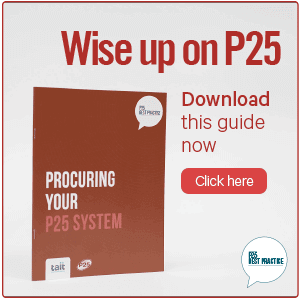Defining the Procurement Process
What is the best way to procure your new system? P25 system buyers face several choices. Let’s look at some of these, to explain the potential impact of your decisions.
Open competitive process
Another question is whether to use an open competitive process or to negotiate directly with a favorite vendor.
As discussed throughout these guides, all evidence suggests that an open, competitive process will result in savings in great majority of circumstances.
RFI, RFP, RFB or RFQ
After deciding to pursue an open competitive process, the next question is which form it should take.
Beware: these terms may have slightly different definitions and significantly different commercial and legal implications in your environment. We provide our definitions not as the only correct interpretation, but to explain the different concepts.
| RFI (Request For Information) | |
|---|---|
| Some agencies require any vendor competing for their business participate in an RFI first. Typically used early in the process to narrow down technology choices, it is often short on detail and conducted during the technology evaluation stage, long before final specifications are released.RFI may include a request for budgetary pricing. | There are two reasons for using an RFI:
A qualified consultant will be able to provide the same information, saving significant time and, quite often, money. |
| RFB/RFQ – Request for Bid/Quote | |
| Typically used when specifications are so detailed that the issuing agency is confident the outcome can be decided solely on price, RFB/RFQ leaves little or no room for exceptions (non-compliant responses).This process requires significant work in preparing the procurement document, with no room for alternative interpretations of the requirements. At the same time the specifications must ensure that no qualified vendors are excluded due to obscure or proprietary requirements. System design must be nearly 100% complete and included in the document. | Use only when you know exactly what you want and when you are confident your procurement document has captured your requirements with great accuracy and detail. |
| RFP Request for Proposal | |
| The most common of the three procurement processes, it provides a high level of system design detail, but leaves room for vendors’ creativity.It requires less work up front, but makes the evaluation of responses more difficult, as proposals are more likely to be dissimilar and the decision not based solely on price. It provides the buyer some flexibility in evaluating and selecting the vendor, but evaluation is more complicated and there is greater potential for protests. | Use this approach, but define your evaluation criteria clearly for internal purposes before the document is released. |
Purchase subscriber units with the system?
One of the first questions is whether to buy the system together with the subscriber equipment or have two separate competitive processes. There are pros and cons for both of the approaches.
On one hand it is comforting for the buyer to give total responsibility to one vendor. On the other hand, the list of user equipment vendors is much longer than the list of network vendors, so the increased competition among subscriber radio vendors can yield significant (30-40% observed on average) cost savings.
Whichever way you go, make sure from the very beginning that the entire process is challenge-proof: fair, transparent, clean and clearly defined. Failure to do so can lead to cancelling the entire process, loss of time and money as well as major embarrassment.
Click "NEXT" to learn about Financing or select a topic from the menu below.



Leave a Reply